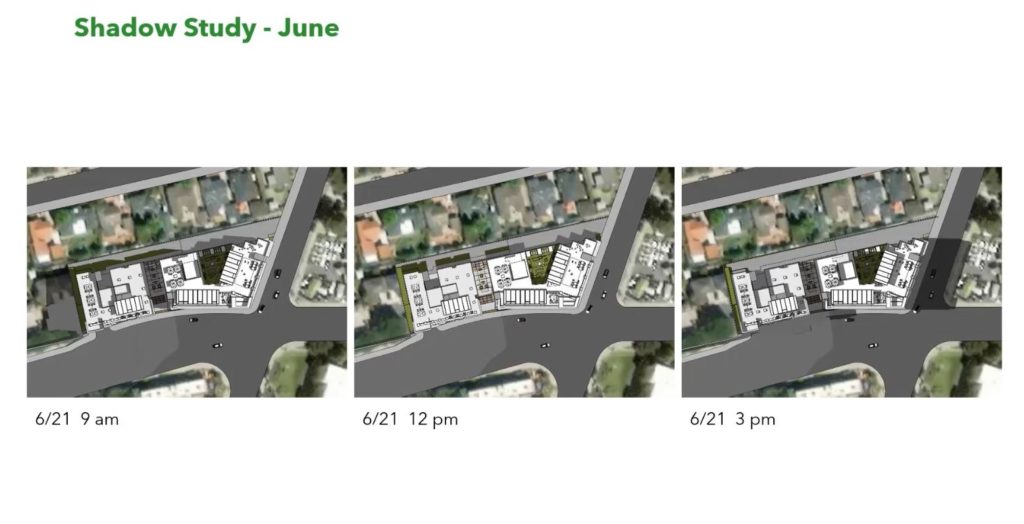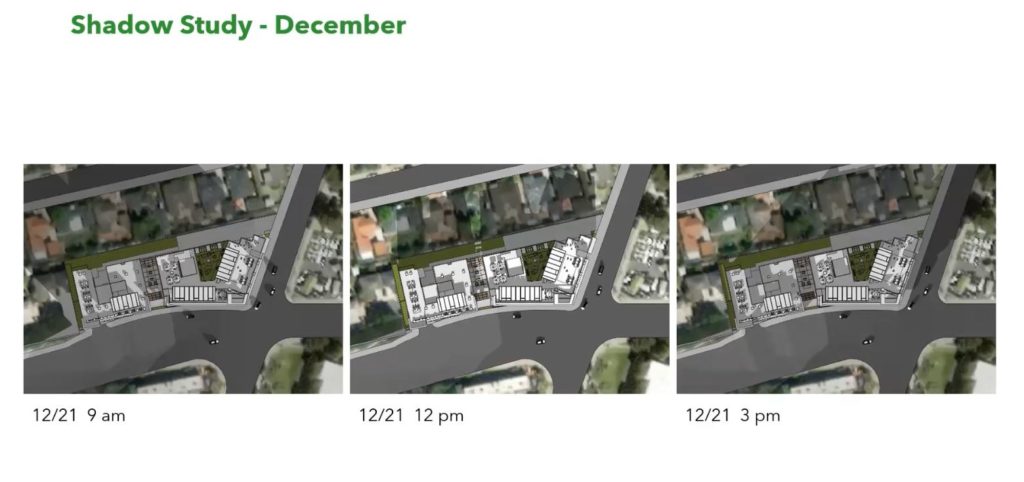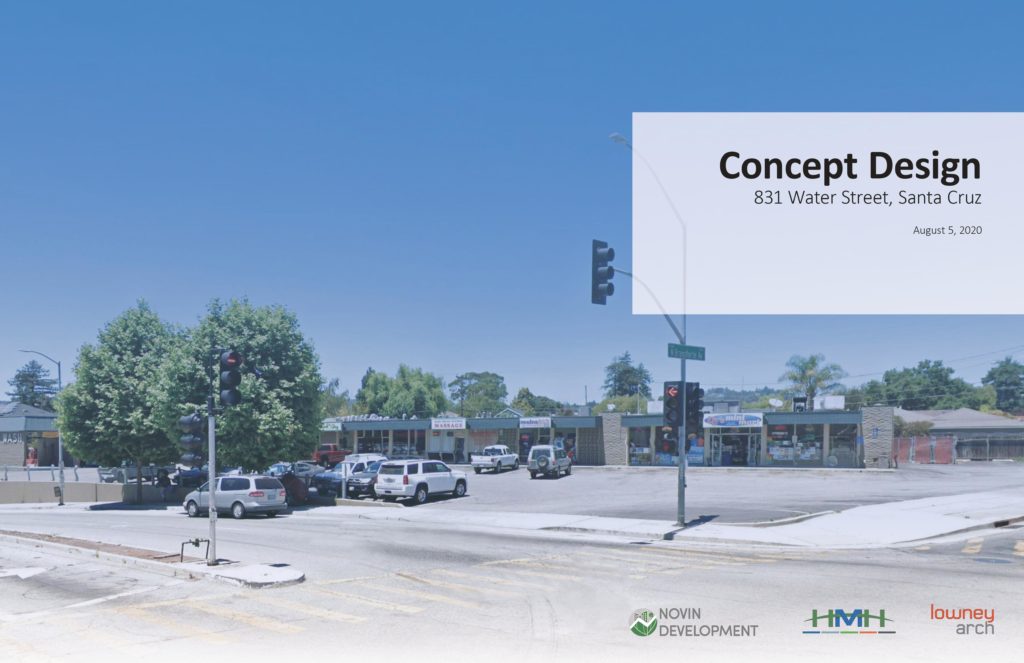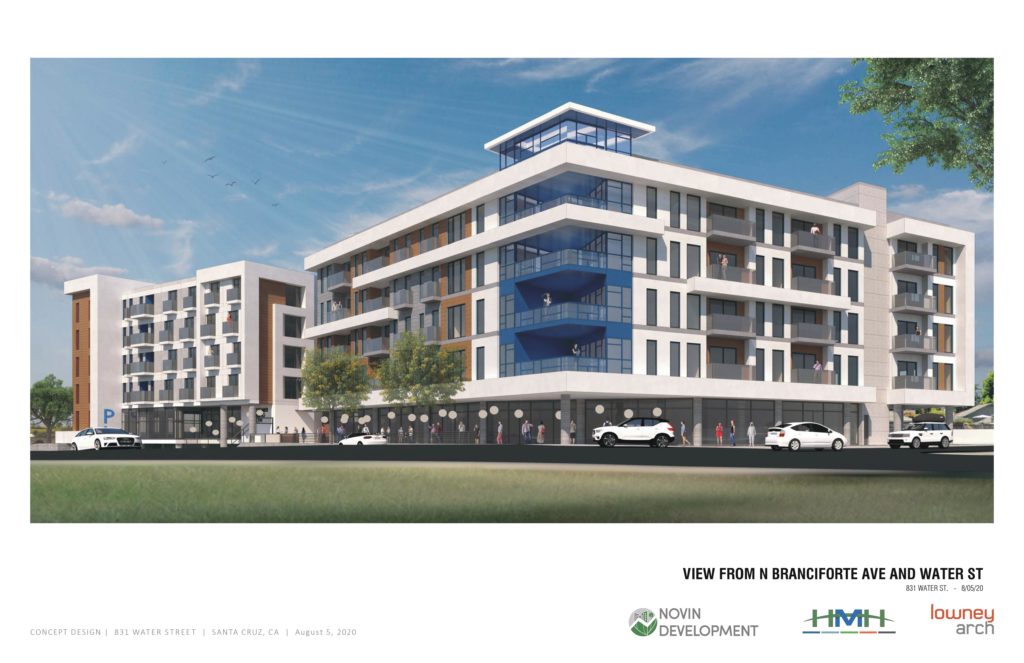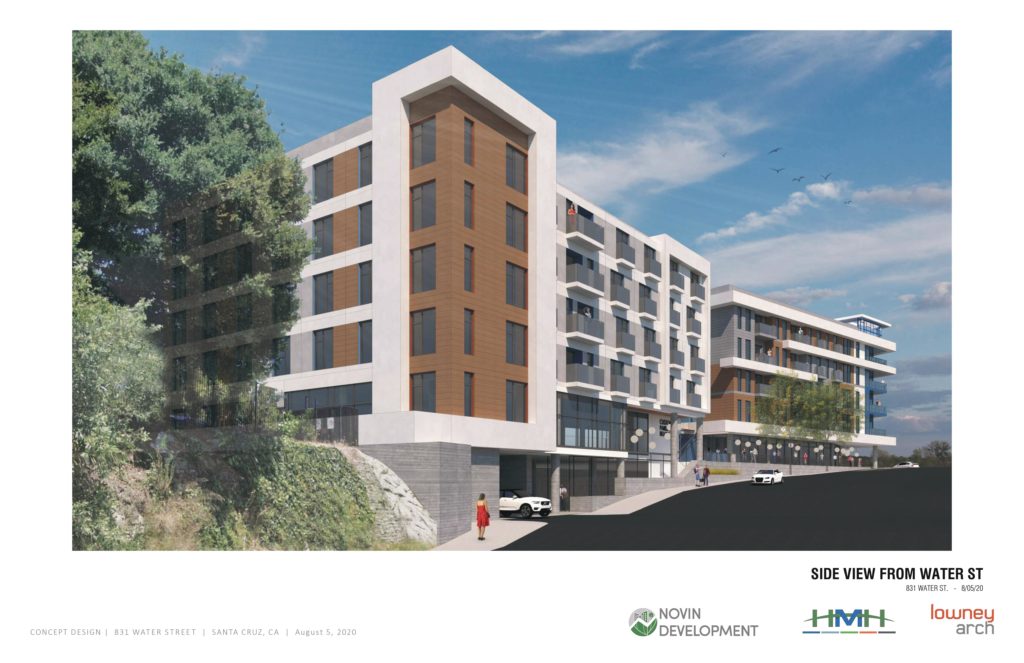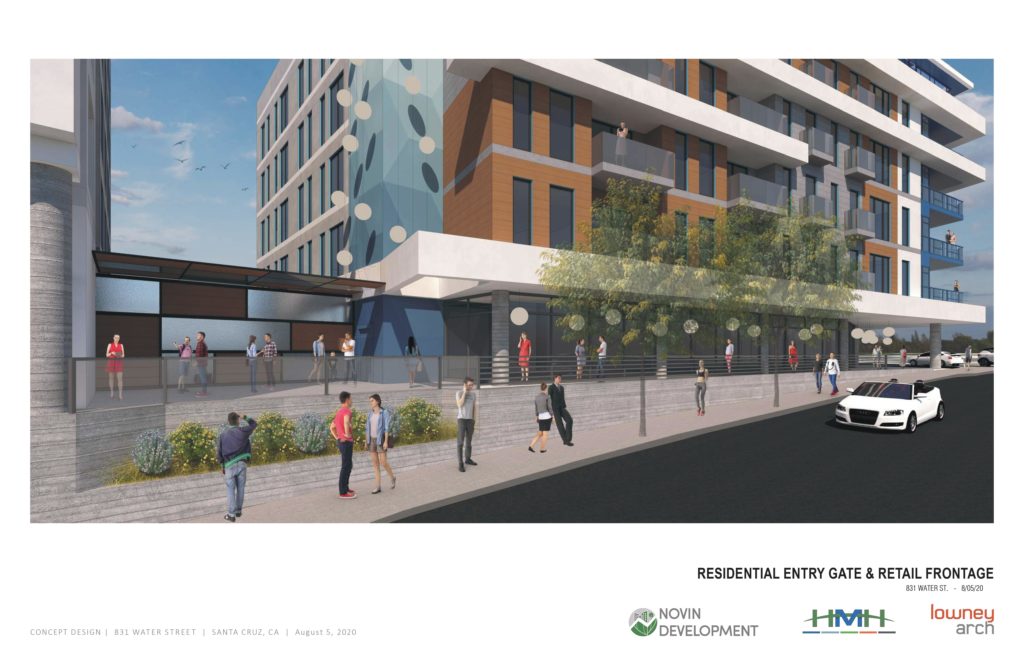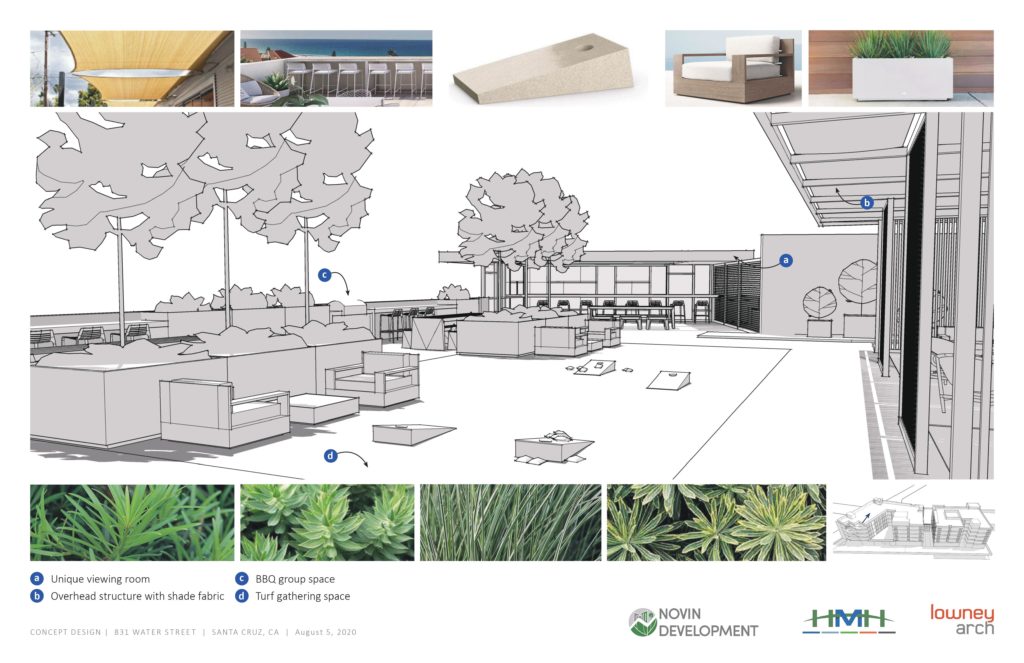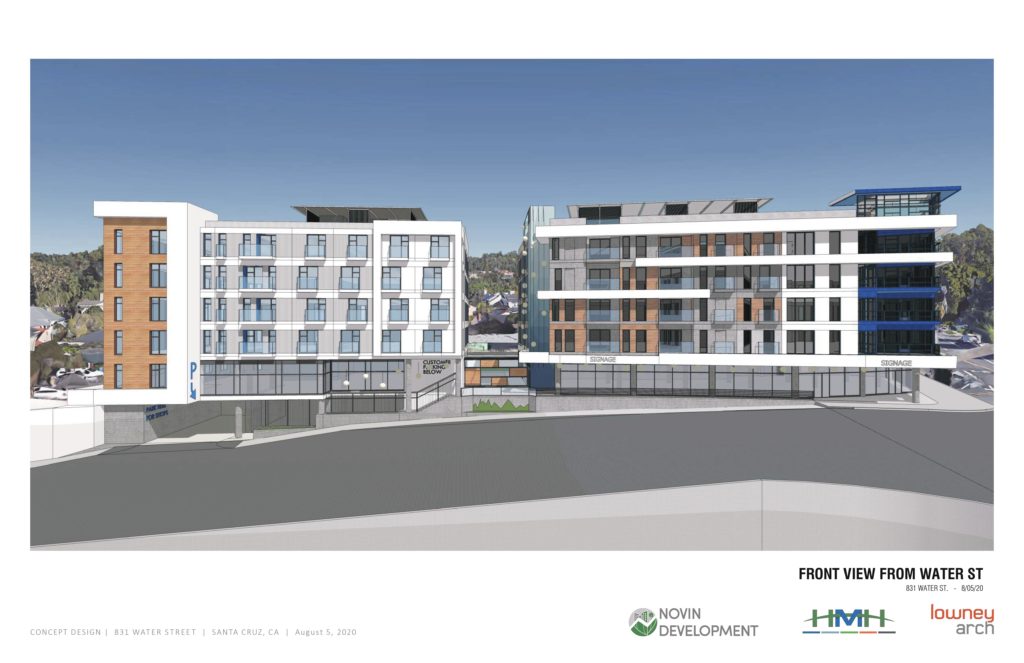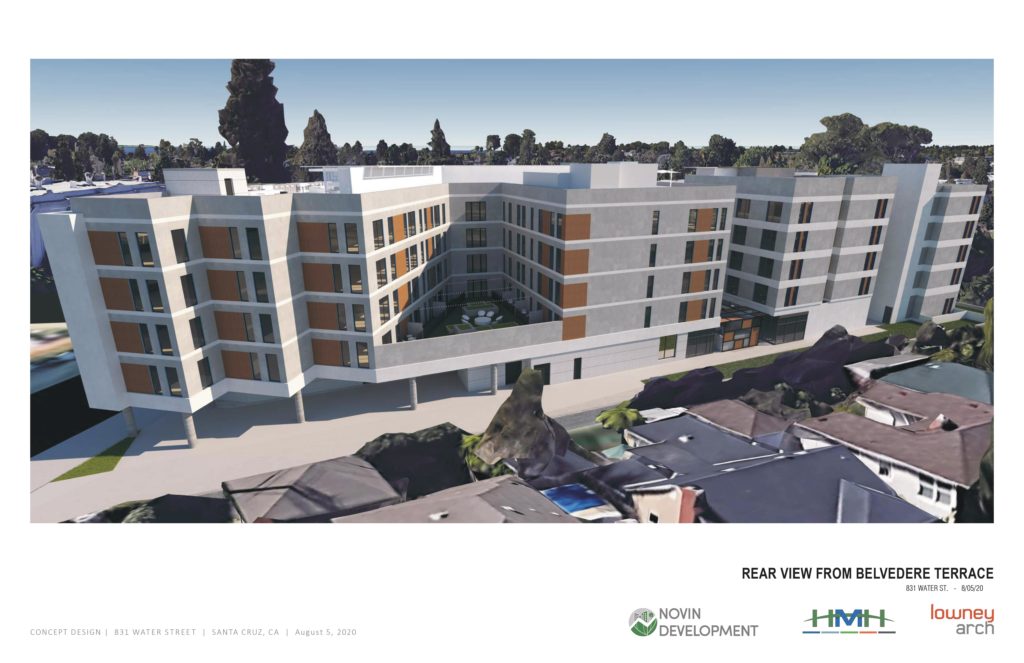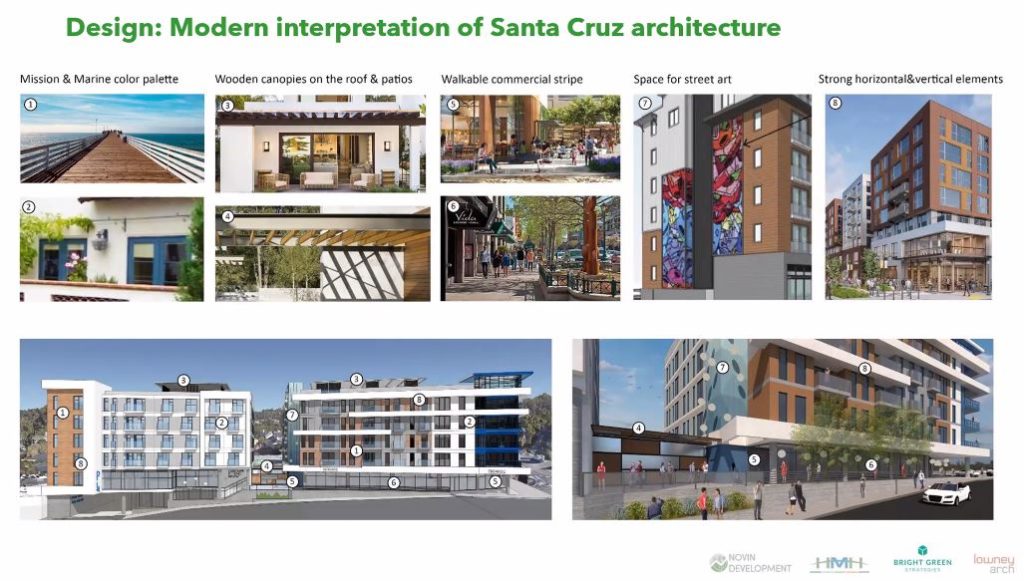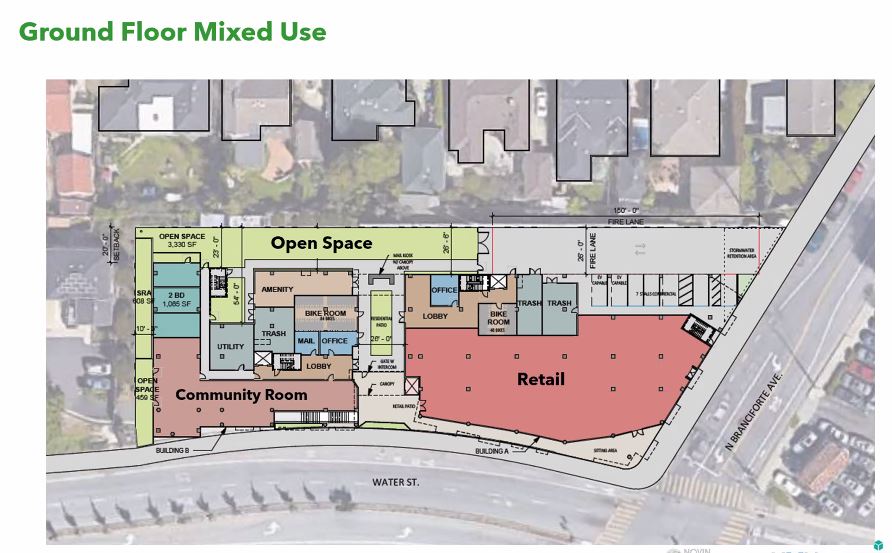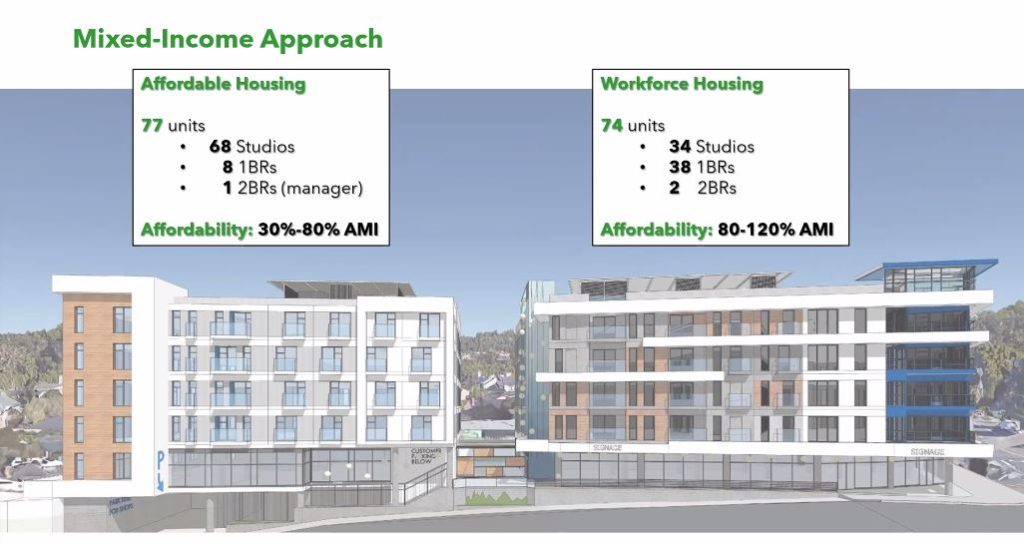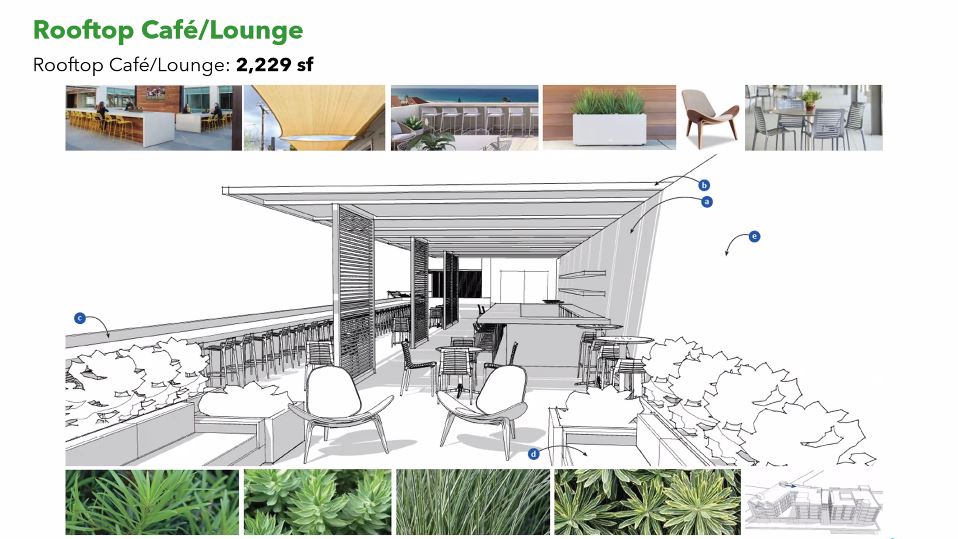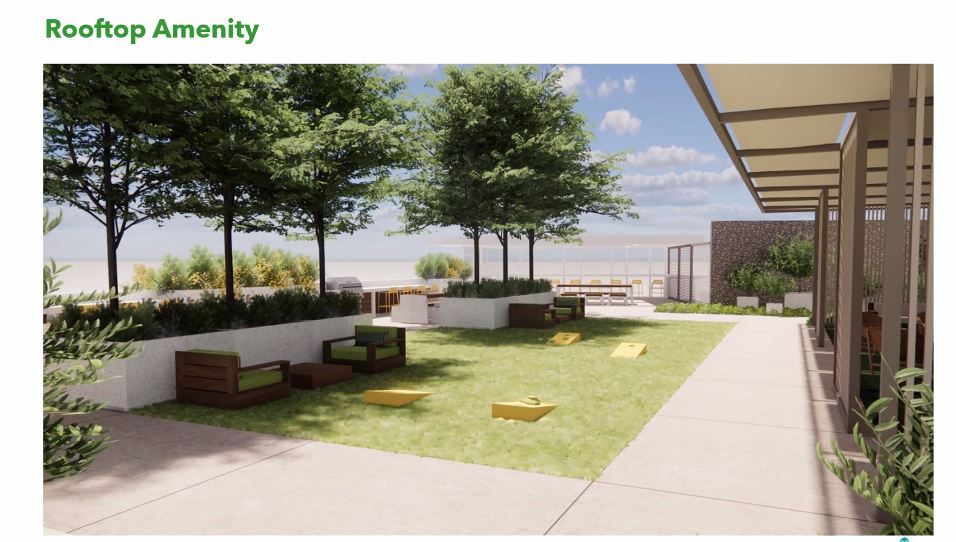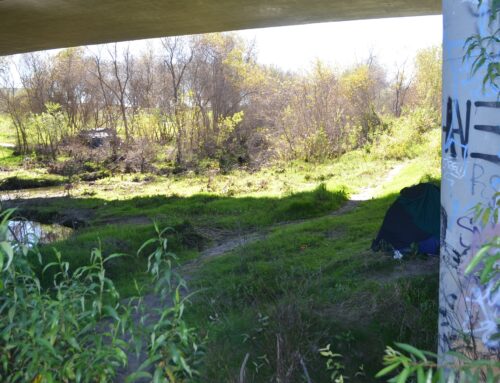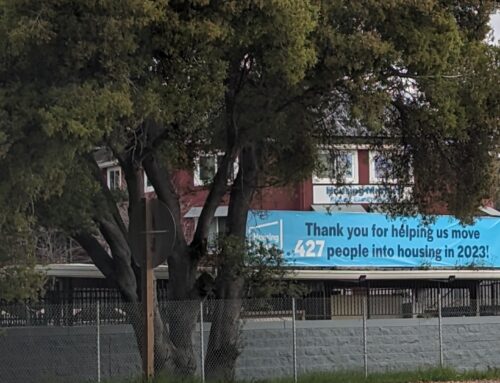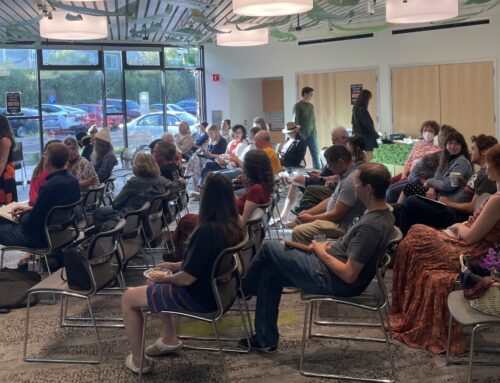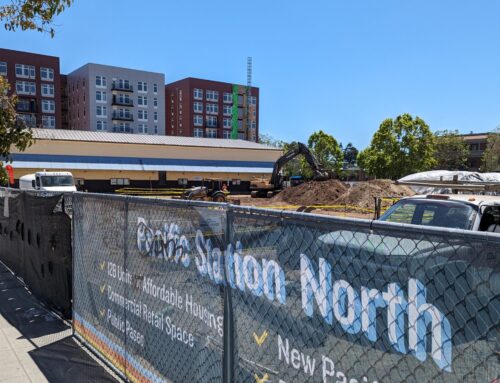SANTA CRUZ >> Developers and Santa Cruz city leaders on Wednesday gave more than 200 residents a closer look at a proposal for a five-story apartment complex near Water Street and Branciforte Avenue.
The proposal at 831 Water St. would replace a strip mall with two buildings that would include 151 homes total. About 77 of the units are proposed to be deed-restricted affordable units based on area median income, said Sam Woodburn, a development project manager for Walnut Creek-based Novin Development.
Santa Cruz Local offers its news stories free as a public service.
We depend on people like you — we call them our Santa Cruz Local members — to chip in $9 a month or $99 a year to make sure vital information can be available to all. Can we count on your help?
“We are proposing what we feel is a transit- and bike-friendly development,” Woodburn said during Wednesday’s online presentation. The roughly 0.9-acres is now a strip mall that includes DJ’s Mini Mart, Metro PCS, a laundromat and a car wash at 831 Water St. and a few other addresses on the 800 block.
The proposal includes a “workforce housing” building with 74 units that include:
- 34 studios
- 38 one-bedrooms
- 2 two-bedrooms
- Prices based on 80% to 120% of area median income
It also includes a second “affordable housing” building with 77 units that include:
- 68 studios
- 8 one-bedrooms
- 1 two-bedroom manager’s unit
- Prices based on 30% to 80% of area median income
The proposal contains 121 to 142 “unbundled” underground parking spaces, meaning that residents would pay for them separately. There would be fewer parking spaces than units because the developers anticipate that some residents would not own cars.
“It’s a definite acknowledgement of how people are living these days, that healthy lifestyle and also the ability to function without a car,” said Mark Donahue, design director at Oakland-based Lowney Architecture. Donahue, during Wednesday’s presentation, also described a public rooftop area that could include a bar.
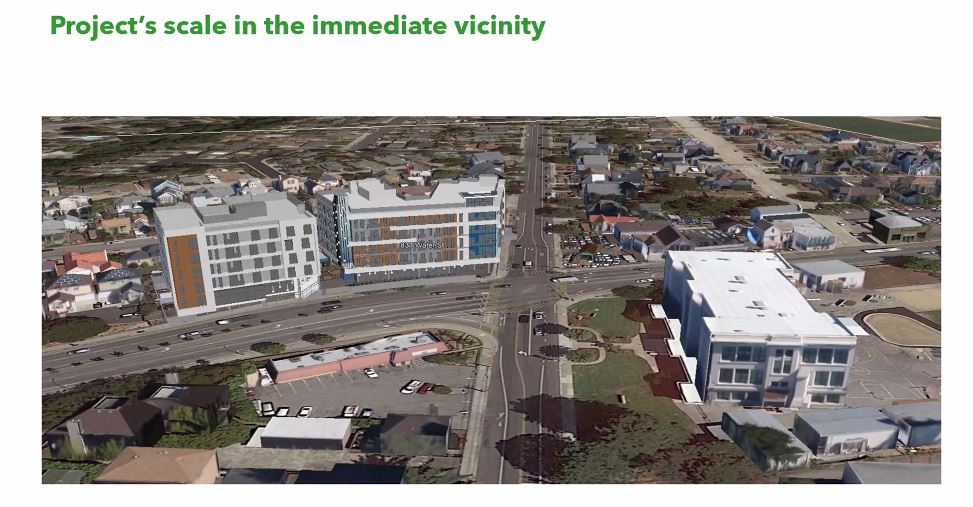
“We’re very excited about the prospect of a privately owned but publicly accessible space that has excellent views of the ocean and could be a place for the entire community to enjoy,” Donahue said.
The construction is proposed to be modular, which costs less and is faster to build than traditional methods. Some of the project’s designers live in Santa Cruz.
Residents gave a variety of feedback about the project, with about nine people who spoke in favor of building homes on the site and 12 who objected to the project’s proposed density, height, lack of parking, increased traffic and shade on Belvedere Terrace homes behind the site. At least five more people asked questions or had concerns.
The developer’s preliminary shade study showed shadows cast on many Belvedere Terrace backyards for most of the day in December, mornings in September and little if any shade in June.
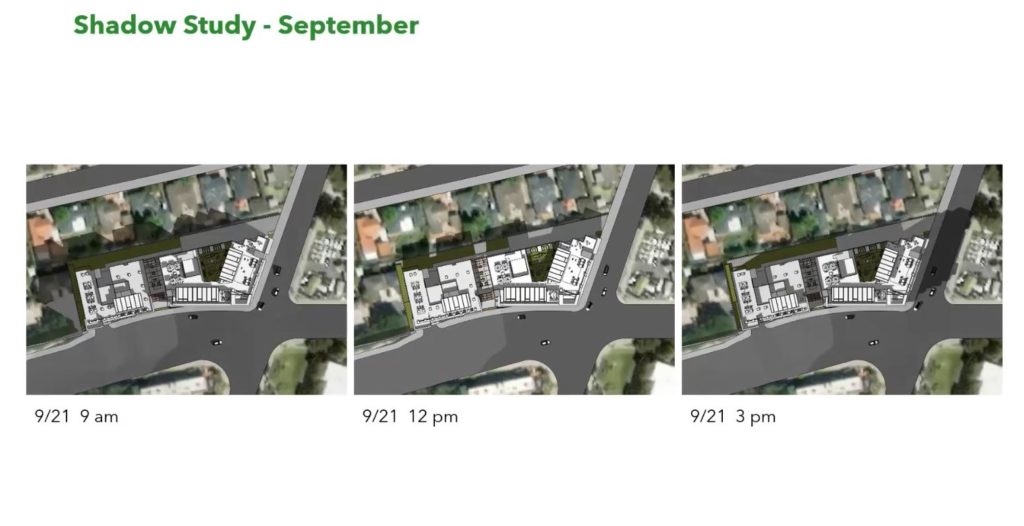
Some residents at the meeting said they thought three stories rather than five would be more appropriate. Branciforte Small Schools on the diagonal corner is also about three stories.
“We moved to this area because of the charm of the neighborhood,” said Monica Meyer, a resident of Magnolia Street a few blocks from the site. “A building of this size is not compatible with our neighborhood and with the character of the existing buildings.”
Other residents near the site said they feared more traffic on the busy corner of Branciforte and Water.
Some said the proposed studios and one-bedroom units would serve students and young people rather than families who need at least two bedrooms. Other speakers said students often crowd into single-family homes and some families of four cram into two-bedroom apartments.
“We have so many people who work here who cannot afford to live here,” said resident Henry Hooker. “I think that the concept of the project is excellent — the notion of dealing in some realistic way with the housing crisis that faces us.” Hooker added, “On the Water Street corridor, which is a transportation corridor, it’s an appropriate place to put this housing.”
Others asked for more bike parking and more electric charging stations for vehicles.
The site is zoned for community commercial use. A formal proposal has not yet been submitted to the city, planners said. It would need a design permit, a special use permit and potentially a review under the California Environmental Quality Act. Permit applications would be heard by the city’s Planning Commission.
The developer and city leaders are also researching whether the project falls under state law SB35, which would streamline permits and CEQA review, said senior city planner Mike Ferry.
City leaders said they plan to review the public’s comments with the developer, post a “pre-application comment letter” to the developer on the mcity’s website and hold a second community meeting.
More information and documents for 831 Water St. are on the city’s website.
Stephen Baxter is a co-founder and editor of Santa Cruz Local. He covers Santa Cruz County government.

